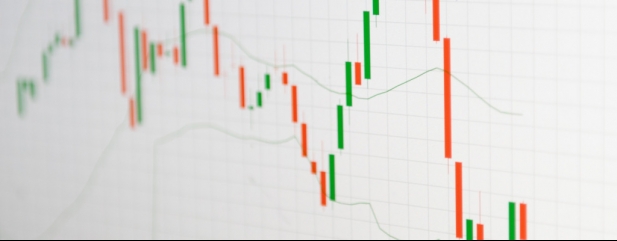Archived article
Please note that tax, investment, pension and ISA rules can change and the information and any views contained in this article may now be inaccurate.
How to profit from Bollinger Bands

Bollinger Bands are a technical trading tool developed by John Bollinger in the 1980’s and were designed to capture high and low-price movements in relation to their trend.
The two bands are dynamic which means the distance between them widens and narrows along with rising or falling share price volatility. Volatility refers to the jumpiness of the shares.
USING STANDARD DEVIATION
Bollinger used standard deviation to measure volatility, which is a popular statistical technique. It measures how far the current share price is away from trend or the average price over the last 20 trading days. The default setting is two standard deviations, which captures 95% of values.
The indicator consists of an upper and lower band which move around the trend or average price, represented by a simple moving average, with the default setting at 20 days (or periods). Note on the Shares website the average line isn’t shown on the charts.
As a reminder of how to find the Bollinger Band indicator on the website, first choose a stock in the search box. We have picked AstraZeneca (AZN).
Underneath the menu bars and the share price data is an intraday chart, and underneath that click on the link to Advanced Charts.
Above the bar showing the date range is the cog-shaped Settings icon with a drop-down menu. Click on Events and Indicators and scroll down to Bollinger Bands and check the box.
Uncheck the volume box and any other checked boxes.
Then click on the one-year timeframe. Note that you can also change the timeframe by moving the brackets beneath the chart.
HOW TO USE BOLLINGER BANDS
There are several ways to use Bollinger Bands, but we will focus on two of the most popular.
Bollinger Bands can be used to help identify strong and persistent price trends which we demonstrate with the price chart of AstraZeneca. When the price ‘tags’ the upper band consistently and only pulls back to the middle of the band, it shows a strongly trending price.
Think of it as the price constantly stretching the average upwards, indicating a persistent move.
As the chart shows, after five months of falling prices, in the middle of March the price ‘tags’ the upper band from which the price retraces to roughly the middle of the band, indicating a strong price trend.
Notice that by the end of April the bands are now pointing upwards, confirming the direction of travel. From the first tag of the upper band on 22 March to the peak on 5 July the shares gained 19%.
This Bollinger Band chart pattern is sometimes called ‘walking the band’ and can be very profitable.
The second pattern we explain is sometimes called the ‘squeeze’ and refers to a compression of volatility which can be identified by the bands narrowing.
This pattern indicates indecision and directionless trading which is often followed at some point by a ‘breakout’ where the volatility or band width ‘explodes’ wider. The key is to follow the direction of the breakout.
A good example is household goods giant Unilever (ULVR) whose shares went sideways from the end of May 2021 until the middle of July.
The width of the bands narrowed significantly, showing market indecision and lack of volatility, confirming the squeeze pattern ‘set up’.
The situation changed on 22 July after Unilever announced that second quarter revenues had grown 5%, beating estimates but also flagged increasing inflationary pressure.
The shares fell on the news taking the price below the lower Bollinger Band which caused the bands to widen and volatility to spike, which ultimately saw the shares drop 10% by the middle of September.
Bollinger Bands are useful because they can highlight strong price trends and potential breakouts by providing unique information about share prices in relation to their volatility.
John Bollinger is considered one of the leading technical analysts and has written several books covering this area including Bollinger on Bollinger Bands.
Read other articles on charting
Beginner’s guide to charting
Using moving averages
Understanding relative strength
Important information:
These articles are provided by Shares magazine which is published by AJ Bell Media, a part of AJ Bell. Shares is not written by AJ Bell.
Shares is provided for your general information and use and is not a personal recommendation to invest. It is not intended to be relied upon by you in making or not making any investment decisions. The investments referred to in these articles will not be suitable for all investors. If in doubt please seek appropriate independent financial advice.
Investors acting on the information in these articles do so at their own risk and AJ Bell Media and its staff do not accept liability for losses suffered by investors as a result of their investment decisions.
Issue contents
Danni Hewson
Editor's View
Education
Feature
Great Ideas
Investment Trusts
Money Matters
News
- Ford to invest another $7 billion in electric vehicle push
- Energy crisis goes global... but investors in Shell are quids in
- HeiQ shares take a beating after near 70% drop in profit
- New fund to help modernise old fashioned UK companies
- UK investors start to lose faith in ‘transitory’ inflation narrative

 magazine
magazine








